Induction or Gas Cooking? Let's Compare the Two
The decision of whether to go with gas or electricity is not cut-and-dried with the lure of high-tech induction cooking
Karyn McRae
18 July 2015
Houzz Australia Contributor. Interior Designer at McRae & Lynch Design.
Whether cooking for pleasure, pure necessity or a combination of both, you need to have a good working relationship with your cooktop in order to get the job done efficiently. In days of old, slow-reacting electric coil or hotplate stoves were the only real alternatives to gas, but vastly superior induction stovetops have changed all that – and choosing the best option to suit your needs is no longer a simple decision. Let’s take a closer look at these two options to help you avoid making the wrong choice.
INDUCTION
Induction cooktops allow a very precise control of heat from very low temperatures to very high temperatures. A magnetic field makes your cookware the heating element, as opposed to the cooktop itself, enabling a much quicker conduction, control and more even spread of heat; but you must only use specific pots and pans that have a magnetic field, such as iron, cast iron and enamel. Some types of stainless steel cookware are compatible as well. A quick way of checking if your current pots and pans are suitable for induction is seeing if a magnet sticks to the base.
Induction cooktops allow a very precise control of heat from very low temperatures to very high temperatures. A magnetic field makes your cookware the heating element, as opposed to the cooktop itself, enabling a much quicker conduction, control and more even spread of heat; but you must only use specific pots and pans that have a magnetic field, such as iron, cast iron and enamel. Some types of stainless steel cookware are compatible as well. A quick way of checking if your current pots and pans are suitable for induction is seeing if a magnet sticks to the base.
The only heat left in the cooktop itself when you remove a pot is from the pot’s residual heat. This leaves the cooktop cooler to the touch and reduces the risk of burns. This is also great for any spills that may occur while you are cooking. There’s no need to wait for the cooktop to cool down; it’s already cool so you can clean up spills immediately. Induction cooktops come in a variety of sizes and element combinations as well as varying price points.
GAS
Unlike electricity, instantaneous heat is generated by a burning open flame in direct contact with the pot. This gives us the ability to instantly control the intensity of the heat by adjusting the size of the flame. Generally speaking, gas is a cheaper form of energy compared to electricity, providing you have connection to gas mains. Otherwise you would need to consider installing bottled gas for the cooktop to function, if gas is your preferred choice.
A typical gas cooktop has four outlets: a high-speed or wok burner, two medium burners and one simmer. With a gas cooktop, you can use stainless steel, glass, Corningware and pyrex cookware efficiently on the elements.
Unlike electricity, instantaneous heat is generated by a burning open flame in direct contact with the pot. This gives us the ability to instantly control the intensity of the heat by adjusting the size of the flame. Generally speaking, gas is a cheaper form of energy compared to electricity, providing you have connection to gas mains. Otherwise you would need to consider installing bottled gas for the cooktop to function, if gas is your preferred choice.
A typical gas cooktop has four outlets: a high-speed or wok burner, two medium burners and one simmer. With a gas cooktop, you can use stainless steel, glass, Corningware and pyrex cookware efficiently on the elements.
When using a gas cooktop, it is best to use the attachments known as trivets. These trivets assist in getting the most out of the heat and help to distribute the heat more evenly – otherwise you end up with a concentrated spot of heat. There are different trivets for different uses. For example, there is a trivet to use when using a wok on the high-speed burner. This trivet assists the gas flame to heat the wok evenly. It is for this reason that gas cooktops are ideal for stir fries, particularly when using a wok. A different type of trivet is used when simmering.
What to consider when choosing between gas and induction
- Does your home have gas mains available? And if not yet connected, what are the costs (and difficulties) involved in setting up a gas connection as opposed to installing an expensive induction cooktop?
- How important is ease of cleaning to you?
- Which option matches the style of your kitchen? Gas and induction are very different looking. What are your priorities when it comes to looks versus functionality?
- Are you prepared (and can you afford) to re-invest in a new set of pots and pans for induction cooking?
The low-down: Induction cooking
PROS
PROS
- Instantaneous heat and greater control of heat
- More even spread of heat
- Safer, as there are no open flames
- Cooktop does not get hot
- Sleek looking with clean lines
- Much easier to clean
- Runs on electricity, therefore doesn’t require the added cost of connecting to gas
CONS - Generally more expensive than gas cooktops
- Requires specific cookware
WHO WOULD IT SUIT? - Those with a more contemporary home or sleek, clean look
- Homes that don’t have a gas mains connection available
- If you like the idea of quick, efficient cooking similar to cooking with gas, but want a high degree of safety when it comes to the cooktop itself
- Busy couples and families wanting to fast track cleaning
- Those looking for a good excuse to buy all new cookware!
The low-down: Cooking with gas
PROS
PROS
- Gives instant heat control due to the open flame, making it ideal for stir-fry cooking
- Easy to visually gauge heat control by looking at the flame size
- More cost effective to run if you have a connection to mains gas
CONS
- Additional cost of setting up if not connected to gas mains (or gas bottles)
- More ventilation is required due to the heat given off by the open flame
- More distance is required between cooktop and overhead cupboards and exhaust fan
- Is more difficult to clean as you need to dismantle the cast iron trivets and clean separately
WHO WOULD IT SUIT?
- Gas cooktops would be a suitable choice for those with access to a gas mains connection who like a more traditional way of cooking
- Those who frequently use a wok to stir fry and have the time or don’t mind the extra effort required to keep it clean
- Those with a more traditional home
Can’t make a decision? Why not combine the two!
Tell us
Which cooking style suits you best? Share your thoughts in the Comments.
More
Looking to upgrade your kitchen? Click here to find a kitchen designer near you
Tell us
Which cooking style suits you best? Share your thoughts in the Comments.
More
Looking to upgrade your kitchen? Click here to find a kitchen designer near you
Related Stories
Renovating Advice
How Do I Find, Assess & Hire the Right People for My Renovation?
Do you need a kitchen designer or a joiner? An architect or an interior designer? Find out with our essential reno guide
Full Story
Renovation Guides
What Key Measurements & Room Dimensions Should I Know for a Reno?
Read practical information about key room measurements and minimum clearances for fittings and fixtures in every room
Full Story
Bedrooms
12 Decorating Tips to Make Any Bedroom Look Better
By Anne Ellard
Want to know how to make your bedroom look better? Here are 12 great tricks
Full Story
Renovation Guides
Room by Room: Experts on Ways to Avoid Common Renovation Blunders
From the kitchen to the garden, and all areas in between, experts identify common mistakes and share priceless insights
Full Story
Bathroom Expert Advice
5 Reasons Your Bathroom Smells Funky (and How to Fix the Problem)
A plumber reveals five reasons your bathroom might smell like sewage or emanate a musty odour
Full Story
Kitchen Renovations
From Planning to Pendants: Kitchen Lighting Essentials
By Joanna Tovia
This valuable guide will give you all you need to know about choosing kitchen lighting for fabulous form and function
Full Story
Living Rooms
The Full Picture: How High Should Your TV Be?
By Matt Clawson
We look at an important question to consider when locating your television: how high should you set it?
Full Story
Bathrooms
All the Dimensions You Need to Know for Your Bathroom Makeover
Fit everything comfortably in a small or medium-size bathroom by knowing standard dimensions for fixtures and clearances
Full Story
Renovation Guides
How to Control the Cost of Your Renovation, Room by Room
Where to save, where to spend (and all the tricks in between) for keeping the cost of your renovation on track
Full Story
Architecture
Renovation Insight: How to Choose an Architect
A great architect can turn your dream home into reality – three industry experts reveal where to look for the right one
Full Story













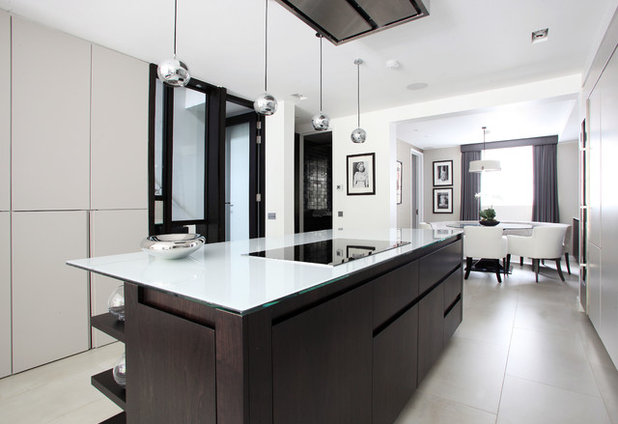
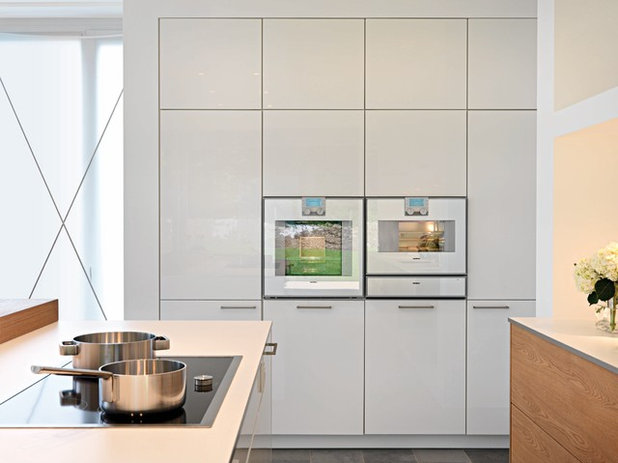
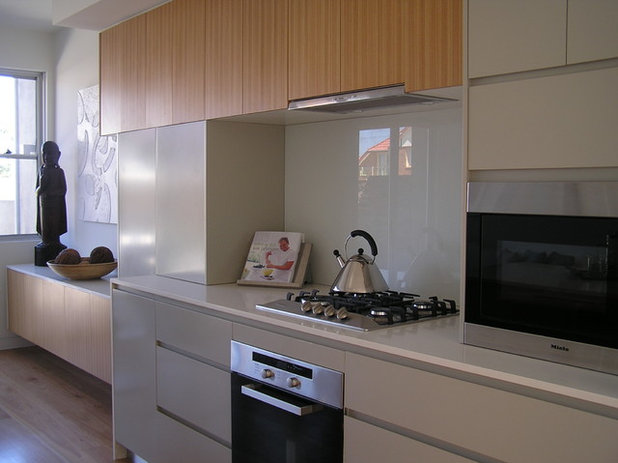
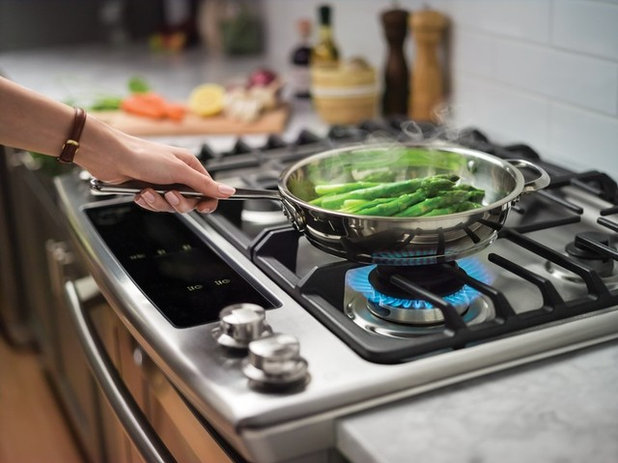
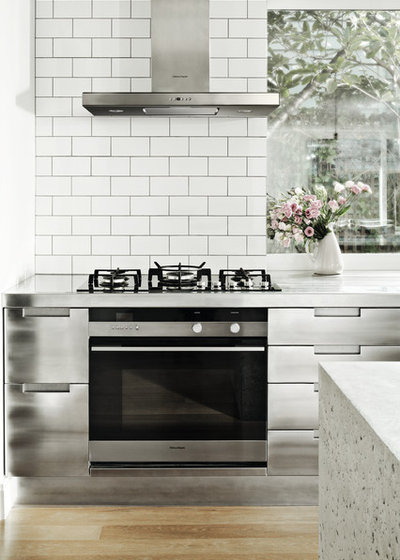
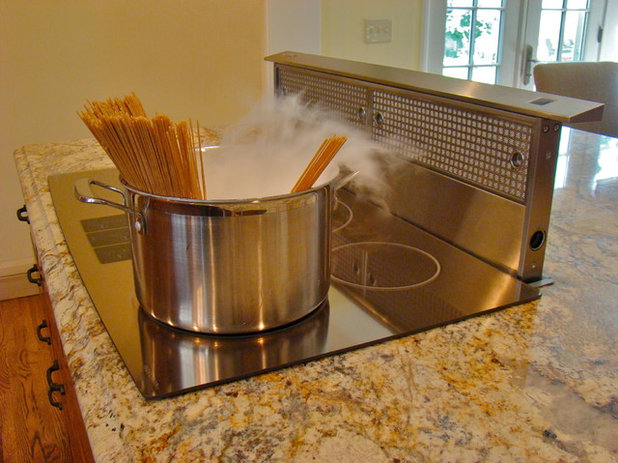
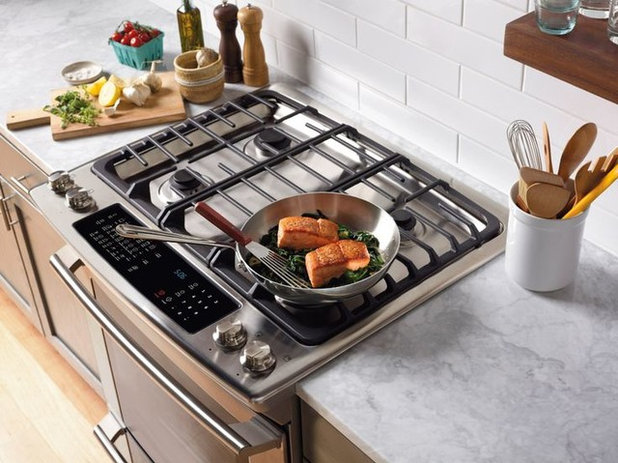
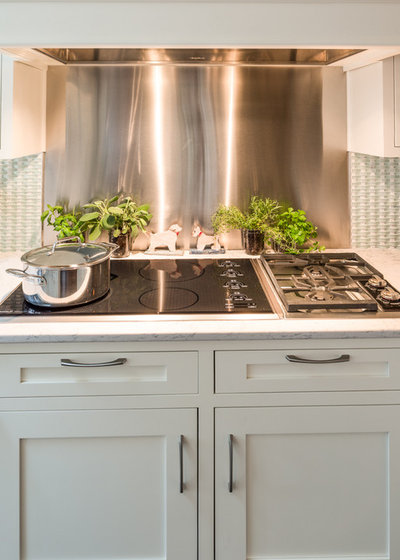

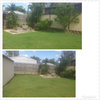











Lol - yes! The hot-spots do remain hot for a short while after you have finished and, obviously, the pots/pans get hot so you may need to take care there. Simple controls and you'll figure it out very quickly.
EMF exposure with induction a concern.
@molivos45.
Induction cooktops produce extremely low frequency radiation, similar to microwave radio frequency. This type of radiation diminishes to nothing at distances of 5-30cm from the source. During normal use, you will not be close enough to the operating induction unit to absorb any radiation.
This info may be useful. It talks about differentiating the sources of radition. http://theinductionsite.com/radiation.php
This one doesn't mention induction cooktops but it talks about other low EMF emitting appliances: https://www.healthline.com/health/emf